Hi,
I am in the process of evaluating 2 blue synthetic diamonds. I like some feature of each, and if a third stone could "have it all", I would even be happier. However, if I didn't have a choice between the 2, I would probably not know that differences existed. But I do. There have been at least 3 or 4 other posters that have listed their past similar dilemmas on the MMD forum, and who have also gone through the similar steps of pre-purchase and post-purchase evaluations.
I've also figured out a way to define color that makes some sense to me and allows for comparison. First of all - determining "base" color in a round brilliant colored diamond was difficult with areas of color-contrast and sparkle, but shading the diamond from light on all sides, visually "averaging out" its color, and comparing it next to a Benjamin Moore paint sample cards, seemed like the best choice, and it could potentially allow someone else to compare. Otherwise, mid-range colors of diamonds such as Fancy, Intense, and Vivid fall into range between Aquamarines and Sapphires, and do not allow for a direct comparison to another stone. Topazes are in-between for saturation, however in hue are too greenish to directly compare to the grayish blue of the diamonds.
I've also run their measurements through HCA online. I did not have a better alternative to evaluate their light return pre-purchase, as no colored diamond version of HCA is available.
I'm also not trying to ask which one should I choose - as from the previous posts questions and answers, it boils down to make a decision what is most attractive to you (or in this case me). What I'm trying to do, is understand why each appears the way it does. Any educated guesses or explanations are most welcome. I will post their stats, but not photos - I doubt that my amateurish photos would be able to show any differences. The seller did provide me with videos of the diamonds, in sun and in fluorescent lighting, and other than obvious saturation and size differences, I could not differentiate their light performance from those. I would not be able to create better photos or videos, but I can describe what I see.
Anyway,
Candidate # 1
Fancy Blue (my color grade Benjamin Moore SW6505 Atmospheric)
VVS2 5.44x5.41x3.21 0.58ct
Depth: 59.2% Table: 58.0% Crown: 13.3% 32.8° Pavilion: 42.4% 40.3°
Polish: Very Good, Symmetry: Very Good, Girdle: Thin, Culet: None, Fluorescence: None
HCA 1.3, brilliance very good, fire excellent, scintillation excellent, spread excellent
Candidate #2
Fancy Intense Blue (my color grade Benjamin Moore in-between SW6514 Respite and SW 6515 Leisure Blue)
VS2 5.34x5.30x3.19 0.56 ct
Depth: 60.0% Table: 57.0% Crown: 13.9% 33.9° Pavilion: 41.9% 40.0°
Polish: Very Good, Symmetry: Very Good, Girdle: Medium, Culet: None, Fluorescence: None
HCA 1.6, brilliance very good, fire excellent, scintillation excellent, spread excellent
Now, the way I see them.
Against my skin, #2 has more "presence" even though it is smaller by 0.1 mm diameter of the two. The color makes it look larger or more defined. It could look good in a prong solitaire setting (and not need a halo). I would not consider #1 as a candidate for a prong solitaire settings - it would not have enough presence against my skin. I have minimally tanned Caucasian color skin, skin type II, but I do have a little more yellowish hue than an average person, in case that's helpful information.
In their boxes - which are cut outs in black boxes (inner square black, and all outer sides of the box black) and stones are between two sheets of transparent plastic in the middle, the #1 has better light performance - definitely more brilliance and more fire, as I can judge with my eyes - either within arms distance or from a couple of feet away. Scintillation appears comparable, to my eyes.
Placed in a costume jewelry white metal closed tip full bezel setting (full bezel is how I want the stone set, whether open tip or not, is yet to be determined), #1 still has same light performance with more brilliance and fire. As an additional bonus here, its "presence" is improved, by what I've started to refer to as "halo effect" - this is when a lighter shade colored center stone is surrounded by colorless material (whether a halo of small colorless diamonds, or a half bezel or full bezel) - it creates a basis for comparison, showing off the color of the center stone. This effect appears appealing to me in lower and mid saturations, and not at all at higher saturations (think Kate Middleton ering). Anyway, so the planned setting gives back more "presence" to #1. But #2 is still a more saturated color.
The questions are:
1) Is the better light performance for #1 due to its lighter saturation (Fancy vs. Intense)?
2) Or is it due to HCA 1.3 instead of the #2's HCA 1.6?
3) Would a first time diamond buyer even be capable of visually distinguishing HCA 1.3 from 1.6 if other parameters (symmetry, size, and color) were comparable?
4) Does 0.1 mm size difference affect light performance #1 is larger)?
5) Since HCA was not designed for colored diamonds, does it completely NOT predict the light performance in colored?
6) Or does it still predict it but not as well as for colorless?
7) Is its utility correlated to saturation?
I do know that HCA is also a screening rule-out tool, not a rule-in tool, and other things such as DiamCalc and Ideal Scope were mentioned as more of a rule-in tools.
 Can DiamCalc or Ideal Scope be used for colored diamonds?
Can DiamCalc or Ideal Scope be used for colored diamonds?
9) Does anyone know of an online computerized tool that can be used for evaluation of colored diamond's cut and light performance?
I've read old posts - back from June 2008, from Diagem, Karl K (aka strmrdr), and Alexei Zarakhani - about optimization of the cut for blue diamonds, based on differences in blue light refractive index vs. averaged-out wavelength white light refractive index.
10) Has anyone done anything with these ideas? I imagine much would be market-driven... Depending on the market share of blue synthetics, and customer preferences about the cut. If it's just a very small percent, then financially it may not make sense to spend time and money on research and development, if it would only be helpful to a small number of customers...
Thank you in advance for your advice and opinions!
I am in the process of evaluating 2 blue synthetic diamonds. I like some feature of each, and if a third stone could "have it all", I would even be happier. However, if I didn't have a choice between the 2, I would probably not know that differences existed. But I do. There have been at least 3 or 4 other posters that have listed their past similar dilemmas on the MMD forum, and who have also gone through the similar steps of pre-purchase and post-purchase evaluations.
I've also figured out a way to define color that makes some sense to me and allows for comparison. First of all - determining "base" color in a round brilliant colored diamond was difficult with areas of color-contrast and sparkle, but shading the diamond from light on all sides, visually "averaging out" its color, and comparing it next to a Benjamin Moore paint sample cards, seemed like the best choice, and it could potentially allow someone else to compare. Otherwise, mid-range colors of diamonds such as Fancy, Intense, and Vivid fall into range between Aquamarines and Sapphires, and do not allow for a direct comparison to another stone. Topazes are in-between for saturation, however in hue are too greenish to directly compare to the grayish blue of the diamonds.
I've also run their measurements through HCA online. I did not have a better alternative to evaluate their light return pre-purchase, as no colored diamond version of HCA is available.
I'm also not trying to ask which one should I choose - as from the previous posts questions and answers, it boils down to make a decision what is most attractive to you (or in this case me). What I'm trying to do, is understand why each appears the way it does. Any educated guesses or explanations are most welcome. I will post their stats, but not photos - I doubt that my amateurish photos would be able to show any differences. The seller did provide me with videos of the diamonds, in sun and in fluorescent lighting, and other than obvious saturation and size differences, I could not differentiate their light performance from those. I would not be able to create better photos or videos, but I can describe what I see.
Anyway,
Candidate # 1
Fancy Blue (my color grade Benjamin Moore SW6505 Atmospheric)
VVS2 5.44x5.41x3.21 0.58ct
Depth: 59.2% Table: 58.0% Crown: 13.3% 32.8° Pavilion: 42.4% 40.3°
Polish: Very Good, Symmetry: Very Good, Girdle: Thin, Culet: None, Fluorescence: None
HCA 1.3, brilliance very good, fire excellent, scintillation excellent, spread excellent
Candidate #2
Fancy Intense Blue (my color grade Benjamin Moore in-between SW6514 Respite and SW 6515 Leisure Blue)
VS2 5.34x5.30x3.19 0.56 ct
Depth: 60.0% Table: 57.0% Crown: 13.9% 33.9° Pavilion: 41.9% 40.0°
Polish: Very Good, Symmetry: Very Good, Girdle: Medium, Culet: None, Fluorescence: None
HCA 1.6, brilliance very good, fire excellent, scintillation excellent, spread excellent
Now, the way I see them.
Against my skin, #2 has more "presence" even though it is smaller by 0.1 mm diameter of the two. The color makes it look larger or more defined. It could look good in a prong solitaire setting (and not need a halo). I would not consider #1 as a candidate for a prong solitaire settings - it would not have enough presence against my skin. I have minimally tanned Caucasian color skin, skin type II, but I do have a little more yellowish hue than an average person, in case that's helpful information.
In their boxes - which are cut outs in black boxes (inner square black, and all outer sides of the box black) and stones are between two sheets of transparent plastic in the middle, the #1 has better light performance - definitely more brilliance and more fire, as I can judge with my eyes - either within arms distance or from a couple of feet away. Scintillation appears comparable, to my eyes.
Placed in a costume jewelry white metal closed tip full bezel setting (full bezel is how I want the stone set, whether open tip or not, is yet to be determined), #1 still has same light performance with more brilliance and fire. As an additional bonus here, its "presence" is improved, by what I've started to refer to as "halo effect" - this is when a lighter shade colored center stone is surrounded by colorless material (whether a halo of small colorless diamonds, or a half bezel or full bezel) - it creates a basis for comparison, showing off the color of the center stone. This effect appears appealing to me in lower and mid saturations, and not at all at higher saturations (think Kate Middleton ering). Anyway, so the planned setting gives back more "presence" to #1. But #2 is still a more saturated color.
The questions are:
1) Is the better light performance for #1 due to its lighter saturation (Fancy vs. Intense)?
2) Or is it due to HCA 1.3 instead of the #2's HCA 1.6?
3) Would a first time diamond buyer even be capable of visually distinguishing HCA 1.3 from 1.6 if other parameters (symmetry, size, and color) were comparable?
4) Does 0.1 mm size difference affect light performance #1 is larger)?
5) Since HCA was not designed for colored diamonds, does it completely NOT predict the light performance in colored?
6) Or does it still predict it but not as well as for colorless?
7) Is its utility correlated to saturation?
I do know that HCA is also a screening rule-out tool, not a rule-in tool, and other things such as DiamCalc and Ideal Scope were mentioned as more of a rule-in tools.
9) Does anyone know of an online computerized tool that can be used for evaluation of colored diamond's cut and light performance?
I've read old posts - back from June 2008, from Diagem, Karl K (aka strmrdr), and Alexei Zarakhani - about optimization of the cut for blue diamonds, based on differences in blue light refractive index vs. averaged-out wavelength white light refractive index.
10) Has anyone done anything with these ideas? I imagine much would be market-driven... Depending on the market share of blue synthetics, and customer preferences about the cut. If it's just a very small percent, then financially it may not make sense to spend time and money on research and development, if it would only be helpful to a small number of customers...
Thank you in advance for your advice and opinions!

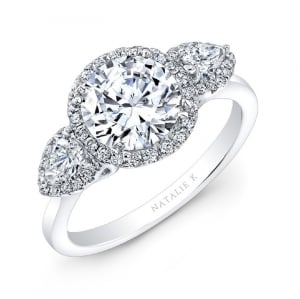
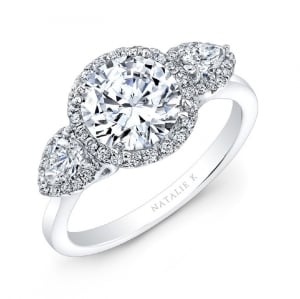
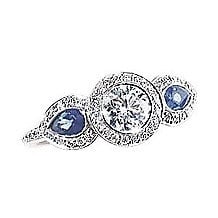
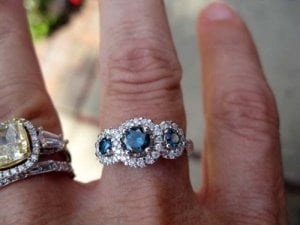
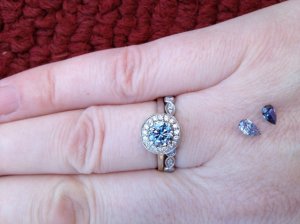


300x240.png)